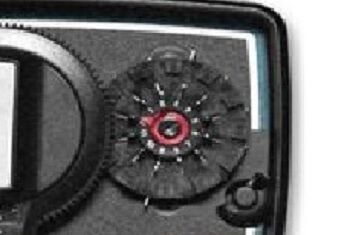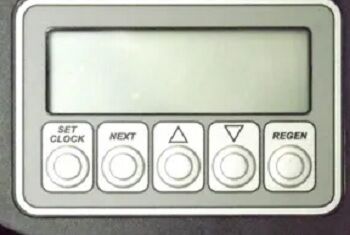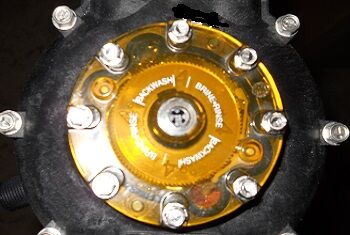You always top off the salt in your brine tank whenever you see it getting low so you never see any water in the bottom of the tank. Is there water in the bottom of the brine tank right now or is it empty? When does your water softener fill your brine tank with water?
Traditional electric and non-electric water softeners add water to their brine tank at the very end of the regeneration process. Some modern electric water softeners can be programmed to add water to the brine tank just a few hours before the regeneration process begins.
A water softener needs to add water to the brine tank to dissolve salt in the brine tank which creates brine. It takes several hours to dissolve enough salt to create brine which is why most water softeners add water to the brine tank at the end of the regeneration process, but this is not always the case.
When Does A Mechanical Electric Water Softener Add Water To Its’ Brine Tank?

The most basic mechanical electric water softener uses a simple timer motor to know when it is time to regenerate, advance through the regeneration cycles, and when it will add water to the water softener’s brine tank.
On a mechanical electric water softener, the brine tank is filled toward the very end of the regeneration process to allow the water to create brine which will be used during the next regeneration.
Because a mechanical-electrical water softener has no programmability to change the order of the regeneration cycles, the water softener will only add water to the brine tank during the preset brine fill cycle.
When Does A Basic Digital Electric Water Softener Add Water To Its’ Brine Tank?

Although some basic digital water softeners have the ability to change the order of the regeneration cycles they generally will not have the ability to fill the brine tank with water other than during the end of the regeneration process.
Because the water added to the brine tank needs several hours to create a brine, adding water to the brine tank early in the regeneration process would not allow enough time for the brine to be created and therefore the water softener resin would not be properly regenerated.
When Does A Highly Programmable Electric Water Softener Add Water To Its’ Brine Tank?
Many modern water softeners have very versatile computers which allow for an almost unlimited variety of programming options including when to fill the water softeners’ brine tank.
Some more advanced modern water softeners have the ability to program the water softener to add water to the brine tank before the regeneration process begins instead of filling the brine tank towards the very end of the regeneration process.
The water softener will add the preset amount of water to the brine tank about 4 hours before the regeneration process is set to begin so the water will have enough time to dissolve enough salt to become brine which is needed to regenerate the water softener resin.
Why Would You Want Your Water Softener To Fill Its Brine Tank Just Before It Regenerates?
- Helps To Prevent Salt Bridging:
Having water in a brine tank for long periods of time can cause the salt above the water level to bond together and create a single piece (Bridge) of salt crust that can leave a void below the crust where there is no salt and therefore no brine will be created.
- Keeps Brine Tank Cleaner:
By only having water in the brine tank for a few hours rather than several days, dirt and debris have less time to collect on the walls and brine float assembly inside of the brine tank.
- Sulfur Water Odor:
Leaving rotten egg-smelling water containing hydrogen sulfide or sulfur bacteria in a brine tank can make the entire area surrounding the brine tank smell like rotten eggs.
- Humidity From Water In The Brine Tank:
Having water in your brine tank in a warm area can create high humidity in the area which can lead to sweating plumbing and condensation on windows and other fixtures. Excessive humidity can also cause wood to warp and bacteria to grow on surfaces.
Check Out This Quick Video About How A Water Softener Can Fill The Brine Tank Before Regeneration.
When Does A NON-Electric Water Softener Add Water To Its Brine Tank?

Since a NON-electric water softener doesn’t have an electric computer to instruct it to add water to the brine tank, a NON-electric water softener will add water to the brine tank at the very end of the regeneration cycle so there will be brine ready for the next regeneration.
A NON-electric water softener can regenerate at any time of day so the brine tank could be filled at any time of the day.
How Does An Electric Water Softener Know When To Fill Its Brine Tank?
An electric-mechanical water softener has either a mechanical dial that rotates with a tab that makes contact with a trigger that starts and then stops water from filling the brine tank.
Many common electric-mechanical water softeners will fill the brine tank at the end or near the end of their regeneration process.
How Does A NON-Electric Water Softener Know When To Fill Its Brine Tank?
A NON-electric water softener will automatically fill its brine tank at the very end of its regeneration process when the brine draw cycle is complete because the control valve remains in the brine fill position until it is switched to brine draw mode during regeneration.
To Sum Up:
Most water softeners that use an electrical timeclock fill their brine tank towards the end of the regeneration process but some are able to fill their brine tank a few hours before they regenerate to help prevent salt bridging, keep the brine tank cleaner, avoid long-term odor from the water or to prevent extra humidity in the room.
Also, see my articles:
Why is my water softener brine tank full of water?
Why is my water softener brine tank overflowing?
Should there be standing water in my water softener brine tank?


Thank you for this great service! I didn’t see any info on whole house reverse osmosis systems – do you have any info on that? Do they include pre-softening or do you need to add that to prevent damage to the RO system? Thank you!
Hello Mary and thank you for the question.
I haven’t written any information about whole house reverse osmosis systems yet because they are usually only needed in very unique situations. If you are considering getting a whole house reverse osmosis system I would recommend that you get several evaluations of your water situation before deciding to go with a whole house reverse osmosis system as they can be quite expensive and will need regular (and sometimes often) filter changes which can be several hundred dollars each time.
Hope this was helpful.
Paul